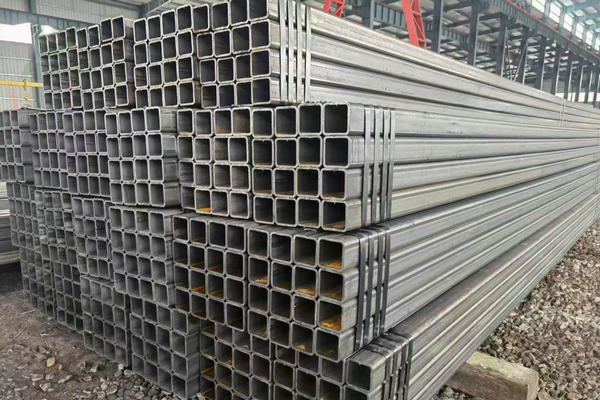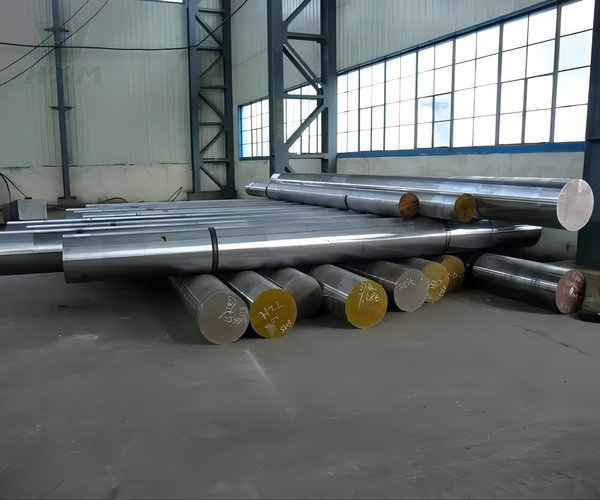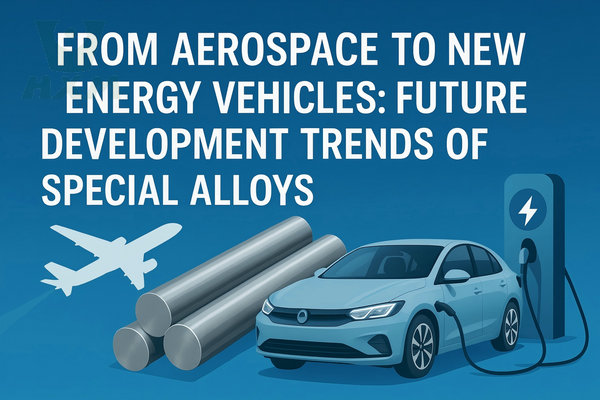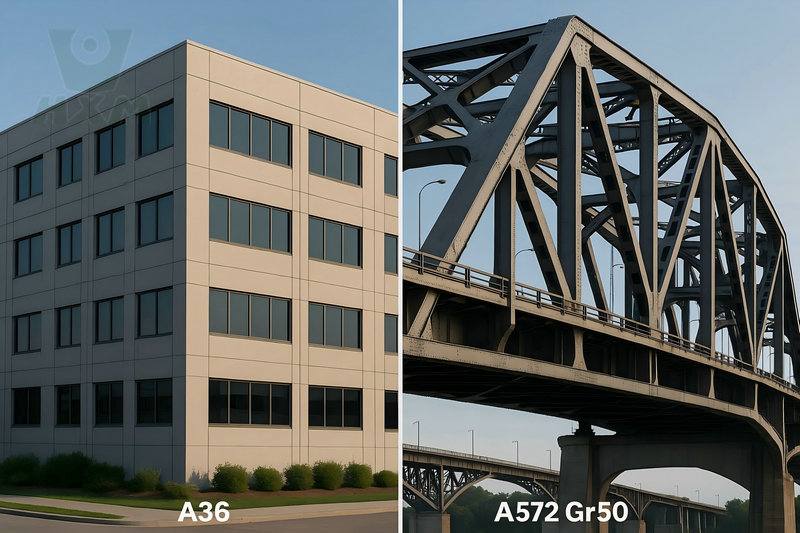In the steel industry, Q235A vs Q235B are two common carbon structural steels. Although they may be similar in appearance, there are some significant differences in chemical composition and performance. Understanding these differences is critical to the proper selection and application of these materials. In this article, we’ll dive into the differences between Q235A vs Q235B to help you better understand their features and uses.

A36 Carbon Steel
A36 Carbon Steel Suppliers and Manufacturer A36 grade carbon steel is easy to weld, form, and form using machine tools. They have a good strength-to-weight
As a professional steel supplier, we at Huaxiao Metal often see clients puzzling over this choice. This guide goes beyond the basic data sheets. We’ll explain the key differences in plain terms and, most importantly, help you decide which grade is the right choice for your specific application.
Q235A vs Q235B: What’s the Difference?
Chemical Composition of Q235A vs Q235B:
Q235A and Q235B are two common low-carbon steels. Their main differences are in their sulfur content and mechanical properties.
First of all, Q235A has a higher sulfur content, usually Sulfur (S): ≤0.050, while Q235B has a lower sulfur content, Sulfur (S): 0.035. Differences in sulfur content can cause changes in the material’s mechanical properties.
| Grade | C | Si | Mn | S | P |
| Q235A | ≤0.22% | ≤0.35% | ≤1.4% | ≤0.050% | ≤0.045% |
| Q235B | ≤0.20% | ≤0.35% | ≤1.4% | ≤0.045% | ≤0.045% |
Secondly, the main difference between Q235A and Q235B is the impact toughness, and the impact toughness of B is better than A. In addition, the yield point and elastic modulus of Q235B are also relatively high.
Mechanical Properties
| Grade | Yield Strength (MPa) | Tensile Strength (MPa) | Elongation (%) | Impact Test |
| Q235A | ≥235 | 370-500 | ≥26 | Not Required |
| Q235B | ≥235 | 370-500 | ≥26 | Required (20°C, ≥27J) |
Key Takeaway: While yield strength, tensile strength, and elongation are identical, Q235B requires a 20°C room temperature impact test, whereas Q235A does not. This is the single most important distinction.
Cost of Q235A vs Q235B:
The prices of Q235A vs Q235B usually need to take into account factors such as their chemical composition, production process, supply chain, and market demand. Generally speaking, the price of Q235B may be slightly higher than that of Q235A because Q235B may have higher purity requirements in terms of chemical composition or differences in production processes.
However, actual cost differences may vary depending on steel supplier, region, and market conditions, so a variety of factors need to be considered when selecting materials. If you need to purchase Q235 steel, please contact us to get the Q235 price!
Application of Q235A vs Q235B:
In practical applications, the uses of Q235A and Q235B are also different.
Q235A is mainly used to manufacture structural parts that do not need to withstand particularly high strength, such as steel bars, section steel, steel plates, etc.
Q235B is mainly used for structural parts that need to withstand higher strength, such as bridges, ships, vehicles, machinery manufacturing, and other fields.
The Decisive Factor: Why the Impact Test (Ak value) Matters
So, what is an impact test, and why is it so important?
The impact test (or Charpy test) measures a material’s toughness—its ability to absorb energy and resist fracture under a sudden, sharp load (an impact).
High Toughness (like Q235B): The material can deform and absorb energy before breaking. Think of it like hitting a piece of rubber.
Low Toughness (or untested, like Q235A): The material may be brittle and shatter suddenly under impact, especially in colder conditions. Think of it like hitting a piece of glass.
This difference in toughness has critical real-world consequences:
For Q235A: Because its toughness is not guaranteed by testing, it’s suitable for static load applications where sudden impacts or low temperatures are not a concern. It’s used for general welded structures that don’t carry significant dynamic stress.
For Q235B: The guaranteed impact performance makes it the standard choice for most important welded structural parts. It provides a higher level of safety and reliability for applications that might experience dynamic loads, vibrations, or operate in varying temperatures.
How to Choose: A Simple Decision Framework for Your Project
Making the right choice is about matching the material’s properties to your project’s demands. Here’s a simple guide:
Choose Q235A if your application involves:
✅ General metal structures with static loads.
✅ Non-critical components like fences, brackets, and casings.
✅ Projects where cost-saving is a priority and structural integrity is not the primary concern.
✅ Components that will not be subjected to low temperatures.
Choose Q235B if your application involves:
✅ Structural engineering for buildings, workshops, and bridges.
✅ Machinery parts that endure vibration or dynamic loads.
✅ Welded structures requiring a higher degree of reliability and safety.
✅ Projects where performance and safety justify a slightly higher cost.
A Note on Cost: Q235B is typically slightly more expensive than Q235A due to the additional testing and stricter quality control. However, this minor cost increase is a crucial investment in the safety and longevity of your structure.
Partner with Huaxiao Metal for Your Q235 Steel Needs
Choosing the right grade is just the first step. Sourcing it from a reliable supplier is what guarantees your project’s success. At Huaxiao Metal, we provide more than just steel; we provide peace of mind.
Guaranteed Grade Integrity: We ensure the steel you receive is exactly the grade you ordered, with no substitutions.
Expert Consultation: Still unsure? Our experienced team can analyze your requirements and recommend the most cost-effective and safe solution. Speak to an expert today!
Full Traceability: We provide a Material Test Certificate (MTC) with every shipment, detailing the chemical and mechanical properties so you can be confident in what you’re building with.
Large Inventory, Fast Delivery: We maintain a comprehensive stock of both Q235A and Q235B steel plates, coils, and sections, ready to meet your project timeline.
Frequently Asked Questions (FAQ) about Q235 Steel
Can I use Q235A as a substitute for Q235B to save costs?
We strongly advise against this for any structural or load-bearing applications. The lack of guaranteed toughness in Q235A could lead to catastrophic failure under unexpected impact or in low temperatures.
Is Q235B steel always the better choice?
It’s the safer choice for structural work. However, if you are manufacturing a simple, non-load-bearing item like a decorative panel, Q235A is a perfectly suitable and more economical option. It’s about fitness for purpose.
Does Huaxiao Metal provide Material Test Certificates (MTC) for its Q235 steel?
Absolutely. We believe in full transparency and quality assurance. An MTC is provided with all our Q235B orders and is available for Q235A upon request, ensuring you have complete documentation for your records.
In Conclusion:
To sum up, the main difference between Q235A vs Q235B is the sulfur content and mechanical properties, and their uses in practical applications are also different. When choosing which steel to use, comprehensive considerations need to be made based on the specific application scenario and required mechanical properties. If you want to know more, please contact us directly!







